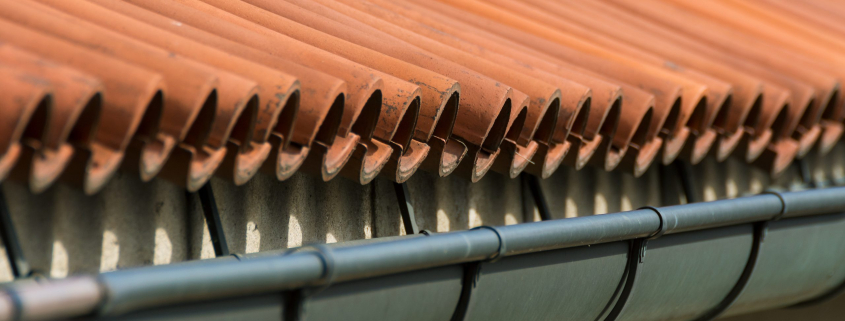How Long Do Roof Shingles Last?
If you are an up and coming home owner who is currently in the process of purchasing your next home, you are probably curious to find out how to know the age of a property’s roof and what the expected lifespan of these structures are.
If you are already a homeowner who has lived in your property for a while, you might still be wondering when your roof is due for a replacement.
Whether you are looking to purchase a new property or just looking to maintain your current one, knowing the age of a roof is important. And you are now probably wondering
“How long do roof shingles last?”
Lucky for you, this guide provides a list of expected lifespans for a variety of roofing systems commonly used on residential properties.
Common types of roofing systems discussed include asphalt shingles, metal roofing, concrete or clay tiles, cedar shingles and shakes, slate roofing, composite roofing, epdm rubber, pvc and tpo roofing membranes.
Asphalt Shingles
Most asphalt shingle roofs last between 15 to 25 years before they show any tell tale signs of needing a roofing replacement. This lifespan, however, is dependent on the specific type of asphalt shingles. Differing on thickness, durability, longevity, aesthetics, and cost, there are 3 main kinds of asphalt shingles in the market – 3 tab shingles, architectural shingles, and premium shingles. Aside from the kind of asphalt shingles used, the quality of the roofing installation, as well as the regularity of roofing maintenance are also key factors to consider when calculating roof longevity.
The most basic type of asphalt shingle is the 3 tab shingle. It is also the least costly among the 3 options. A typical 3-tab asphalt shingle roof will last anywhere from 10 to 20 years but are not as durable as the other alternatives. This type of shingle is prone to developing cracks and having a greatly diminished lifespan when exposed to strong and direct sunlight as well as rapidly changing temperatures.
Architectural shingles which are also known as dimensional shingles are a thicker alternative. Because of its thickness and added weight, this type of shingle is also more durable and can last longer, typically having a lifespan of 15 to 25 years, However, this is also dependent on the surrounding environment.
Lastly, premium shingles are usually used on premium homes because they offer a fancier looking aesthetic thant the previous types discussed. A premium shingle is normally thicker and will last longer than a mid-range architectural shingle. The expected lifespan of this type of roofing shingle is between 2 to 3 decades, also depending on the environment.
Metal Roofing
There are different types of metal roofing options for residential properties. While metal roofing is commonly used for commercial properties, more modern homes are taking on metal roofs due to their low cost, easy maintenance, and modern appeal.
One of the more popular options to residential metal roofing is the use of standing seams. This is a type of metal roofing system that relies on concealed fasteners. When properly installed, standing seam metal roofing structures can last 30 to 50 years.
The lifespan of a metal roof also depends on the type of metal being used on the property. The use of premium metals, such as titanium, stainless steel, copper, and zinc will allow your metal roof to last well over 100 years.
Another popular option for residential metal roofing is the use of metal shingles. These are a less expensive alternative when compared to standing seam metal roofing but can actually offer nearly the same level of durability and longevity.
An even more affordable option is the use of ribbed metal panels. These panels are especially preferred if you have a steeper gable style roof. Ribbed metal panel roofing can give your roof between 25 to 40 years.
Concrete and Clay Tiles
When you look at premium homes in your area, you’ve probably seen many of them sporting concrete or clay tiles. The use of clay tiles is an excellent and classic choice. However, clay tiles are quite heavy and require a special roofing frame in order for the structure to support the added weight. This might add on to the high cost of this type of roofing but the use of clay tiles provides homeowners of a lifespan of 50 years to a full century.
Concrete tiles are similar to clay tiles in many regards including their heavy weight. They are however a less costly tile roofing option, with an expected lifespan of 40 to 75 years.
Cedar Shingles and Shakes
Comparable in cost to metal roofing, cedar shingles and shakes are a common roofing option for beach homes and cape code style houses. Cedar shake roofs are designed to last 20 to 35 years on average. With regular maintenance, however, a cedar shake roof can last around 40 years.
Natural Slate
Slate roofs are notoriously expensive, heavy, and long-lasting. A quality slate roof can last anywhere from 50 to 100 years. Slate roofs have excellent wind uplift properties, but a few pieces of slate flying off of a roof during a hurricane can be dangerous due to their weight and sharp edges.
Composite Roofs
Synthetic composite shingles and tiles are made to resemble natural slate tiles and cedar shakes. Composite tiles are strong, light-weight, and with proper installation can last 30 to 50 years or longer. Cost-wise, they are comparable to standing seam metal roofs.






